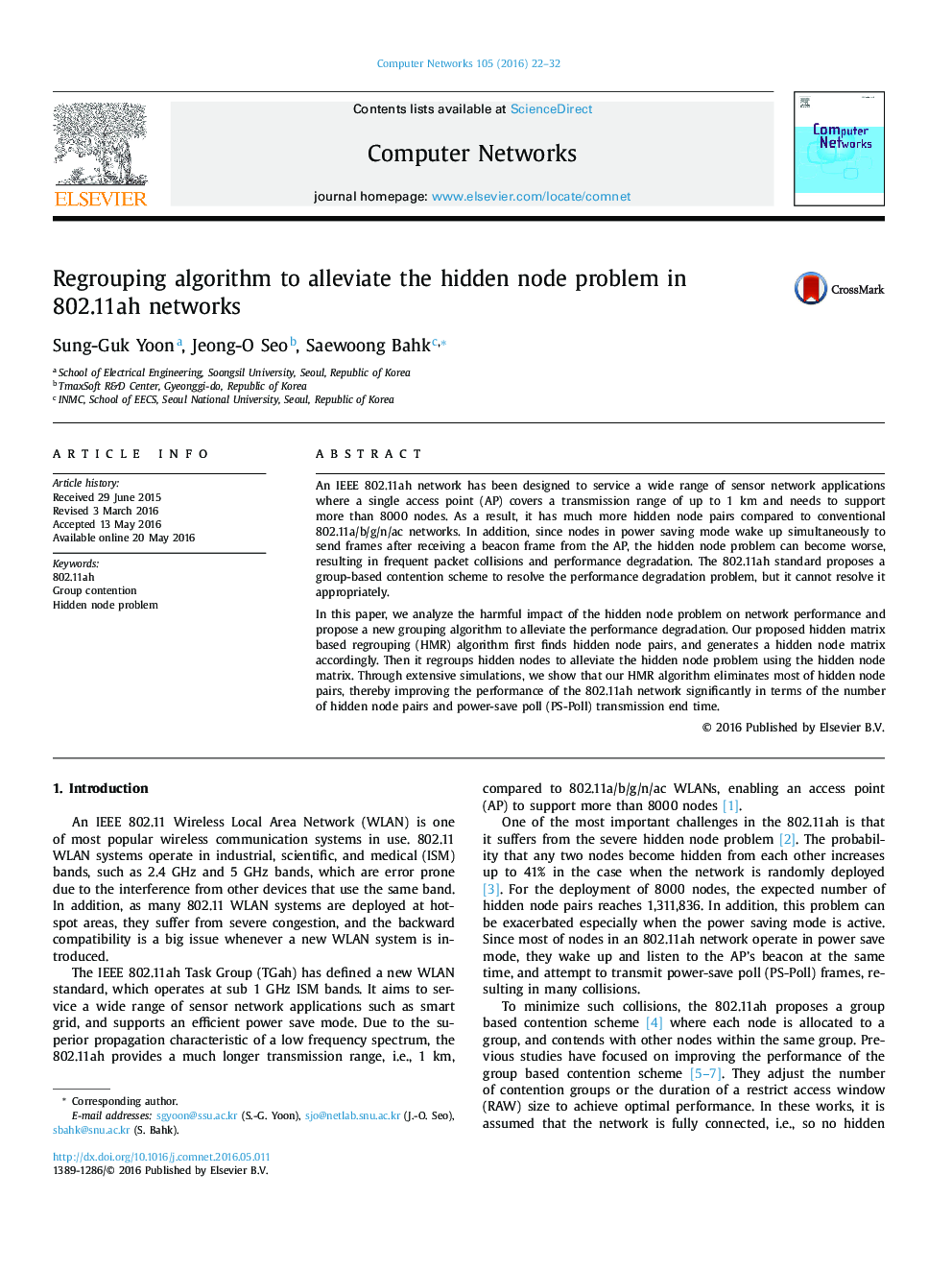| Article ID | Journal | Published Year | Pages | File Type |
|---|---|---|---|---|
| 451605 | Computer Networks | 2016 | 11 Pages |
An IEEE 802.11ah network has been designed to service a wide range of sensor network applications where a single access point (AP) covers a transmission range of up to 1 km and needs to support more than 8000 nodes. As a result, it has much more hidden node pairs compared to conventional 802.11a/b/g/n/ac networks. In addition, since nodes in power saving mode wake up simultaneously to send frames after receiving a beacon frame from the AP, the hidden node problem can become worse, resulting in frequent packet collisions and performance degradation. The 802.11ah standard proposes a group-based contention scheme to resolve the performance degradation problem, but it cannot resolve it appropriately.In this paper, we analyze the harmful impact of the hidden node problem on network performance and propose a new grouping algorithm to alleviate the performance degradation. Our proposed hidden matrix based regrouping (HMR) algorithm first finds hidden node pairs, and generates a hidden node matrix accordingly. Then it regroups hidden nodes to alleviate the hidden node problem using the hidden node matrix. Through extensive simulations, we show that our HMR algorithm eliminates most of hidden node pairs, thereby improving the performance of the 802.11ah network significantly in terms of the number of hidden node pairs and power-save poll (PS-Poll) transmission end time.
